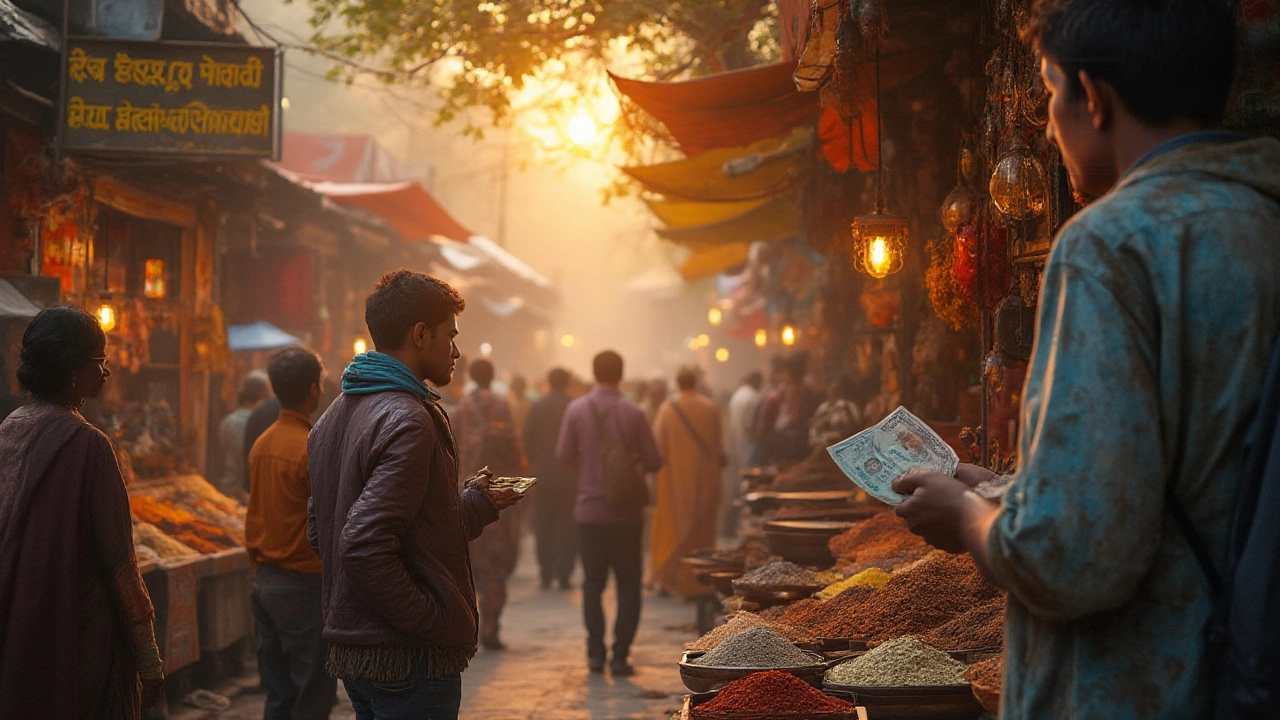US Dollar to INR: What Travelers Need to Know About Currency Exchange in India
When you're heading to India, the US dollar to INR, the exchange rate between the United States dollar and the Indian rupee. Also known as USD/INR, it's not just a number on your phone—it's the key to stretching your budget, avoiding scams, and knowing what you can actually afford on the ground. Every time you swap dollars for rupees, you're making a decision that affects your meals, transport, and even which temple you can visit. And no, the rate you see on Google isn't always the rate you get at the airport.
Real travelers know that currency exchange, the process of converting one national currency into another isn't just about banks and ATMs. In India, local money changers in markets like Chandni Chowk or Colaba Causeway often give better rates than hotel front desks. But you need to know what a fair rate looks like. As of 2025, 1 USD is roughly 83-85 INR, but that number shifts daily. The Indian rupee, the official currency of India, managed by the Reserve Bank of India is stable but not fixed—so checking rates right before you leave matters. And don’t fall for the "no commission" trap. That’s often baked into a worse rate. Always ask for the total rupees you’ll receive before handing over your cash.
Most travelers don’t realize that using a debit card, a payment card that draws funds directly from a bank account at a local ATM often gives you the best rate—with a small fee. Banks like SBI and HDFC have wide networks, and you’ll avoid the shady exchange booths near tourist spots. But warn your bank you’re traveling. Otherwise, your card might get frozen mid-trip. And while credit cards work in cities, they’re useless in rural areas or at small temples. Carry cash. Lots of it. And keep small bills—500 and 2000 rupee notes are hard to break in villages. You’ll thank yourself when you’re trying to pay 75 rupees for chai and the vendor has no change for a 2000 note.
There’s also a big difference between tourist exchange rates, rates offered at airports, hotels, and popular spots aimed at visitors and local rates. Locals buy rupees from neighborhood shops at 84.50. Tourists at the airport? 81.50. That’s a 3% loss right off the bat. And if you’re exchanging leftover rupees before you fly out? You’ll lose another 5-10%. Plan ahead. Spend it. Or use it at duty-free shops. Don’t let it go to waste.
And don’t forget the hidden cost: transaction fees, charges added by banks or payment processors for currency conversion. Some cards slap on 3% every time you swipe. Others don’t. If you’re going to be in India for more than a week, get a no-foreign-transaction-fee card. It’s a small upfront cost that saves hundreds over time.
By the time you land in Mumbai or Delhi, you should already know what your dollar buys. You should know where to get the best rate, how to avoid being overcharged, and how much to carry in cash versus card. This isn’t about being a money expert—it’s about not getting ripped off while you’re busy exploring the Taj Mahal, trekking the Himalayas, or eating street food in Goa. The US dollar to INR rate isn’t just a number. It’s your travel budget’s backbone. Get it right, and your trip gets a lot more comfortable. Get it wrong, and you’ll be counting coins for your next chai.
Below, you’ll find real traveler stories, cost breakdowns, and smart hacks from people who’ve been there—no fluff, no theory, just what works on the ground in India.
